Mahogany Hamilton model 21 two-day marine chronometer, n° 10665, American. 4-inch silvered dial with subsidiary seconds and up/down dials, signed Hamilton, Lancaster, PA., U.S.A., 2E10665, U.S. Maritime Commission, the fusee movement with Earnshaw's spring detent escapement, large uncut balance with helical spring, maintaining power, nickel plates signed and numbered 2E10665, the brass bowl gimballed in a brass-bound box. Balance-spring locking device accessible from the outside, allowing for easy and safe transport. With an original Hamilton beech deck box, and original ratchet winding key.
According to Hamilton's own records, our Chronometer came out of the Hamilton factory on August 6, 1944.
The George Daniels private collection of Watches and Clocks.
Width 21cm (8¼in).
€ 8500.-
Before World War II no chronometers made entirely of domestic materials were manufactured in the United States. A few firms, William Bond & Sons of Boston, Massachusetts, John Bliss & Co., and T.S. and J.D. Negus, both of New York City, assembled chronometers from imported parts, while other firms imported complete instruments which they marketed. At the Outbreak of World War II, very few chronometers were even being assembled in the United States. By the time of the attack on Pearl Harbor, Switzerland had virtually ceased supplying the United States with chronometers because the Axis Powers would not permit such exports to countries other than themselves.
British chronometers manufacturers likewise were unable to supply the United States because of the unprecedented demands of the British Navy. The U.S. Navy, therefore, turned to the domestic watch manufacturers of the United States to produce a chronometer. The Hamilton Watch Company and the Elgin Watch Company accepted the challenge. These two watch companies were obligated to design a chronometer and make all the necessary tools and dies before they could get into production. Only Hamilton was able to produce a chronometer that met Navy specifications. Hamilton engineers undertook to produce chronometers by mass production, something never done before .
Two years later, on February 27, 1942, the Hamilton Co. delivered the first two chronometers to the U.S. Naval Observatory Washington, D.C. Shortly thereafter, production of the chronometer known as “Hamilton Model 21” started in large numbers.
During the month of October 1944, 546 chronometers (the largest one-month quantity) were delivered to the Naval Observatory by Hamilton. Hamilton produced 8902 chronometers to the Navy and approximately another 1500 to the Maritime Commission and 500 for the Army and Air Force. The Model 21 was produced between 1942 and 1961.
The Hamilton ship’s chronometer was a remarkably accurate instrument, performing beyond all expectations. The Navy’s tolerance for the average daily rate was 1.55 sec per day. But the majority of the Hamiltons tested rated well under a half a second per day (fig 6).
The basic design of the Hamilton chronometer was very similar to that of the Nardin (Swiss) chronometer, imported before World War II in the United States .
At first glance, the Hamilton ship’s chronometer was conventional in appearance. Some of the changes Hamilton made was for the benefit of mass production, while others were deemed necessary for the sake of excellence. Of the later, the most outstanding innovation was found in the hairspring and balance assembly.
The original cases were manufactured by the Heintzman Piano Co. of New York, using Phillips screws who were a novelty and an improvement in the American industry since 1938. (they were patented in 1936, although the invention dates back to 1908).
The Ship’s Chronometer, Marvin E. Whitney 1985; The Marine Chronometer, its History and Development, John Cronin 2010; Chronometer Makers of the World, Tony Mercer 1991; NAWCC and Doug Sinclair 2012; Wikipedia 2009.
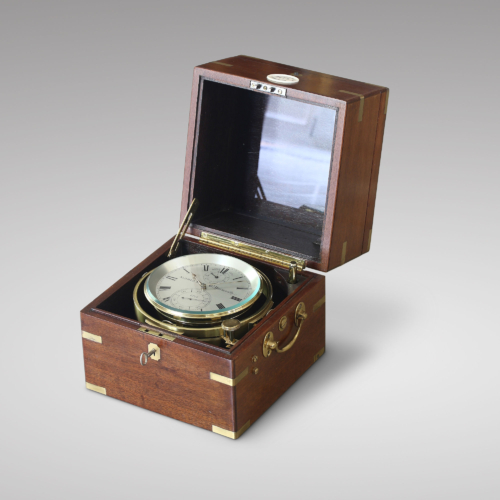
signed Aldred & Son, circa 1880 [...]
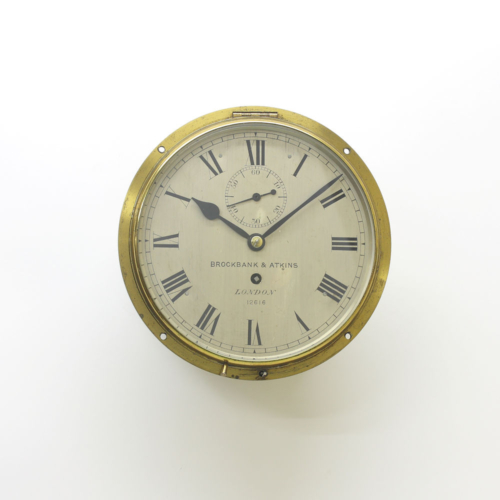
Brockbank & Atkins, English bulkhead clock of good precision, with the main part of the case made to be recessed [...]
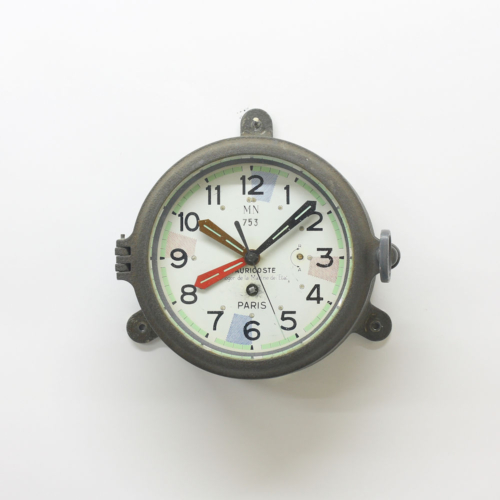
Auricoste, a French Navy 1950s radio room bulkhead clock [...]
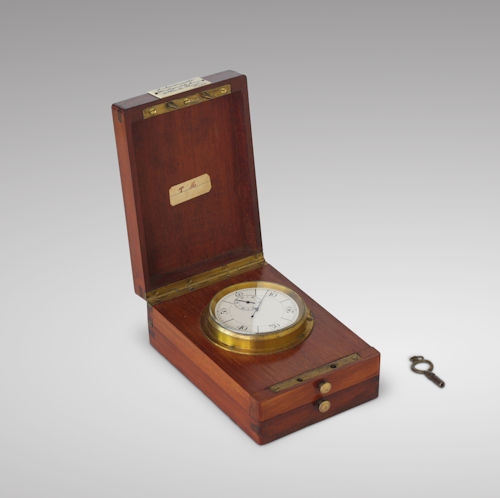
JOSEPH AURICOSTE, Observation Chronometer of small size, for scientific or military use, mahogany case, France, [...]
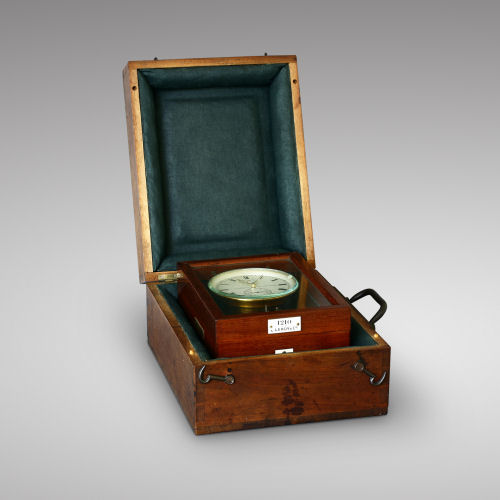
Scientific and observation chronometer, signed L. Leroy and sold in 1913 to General Ferrié [...]
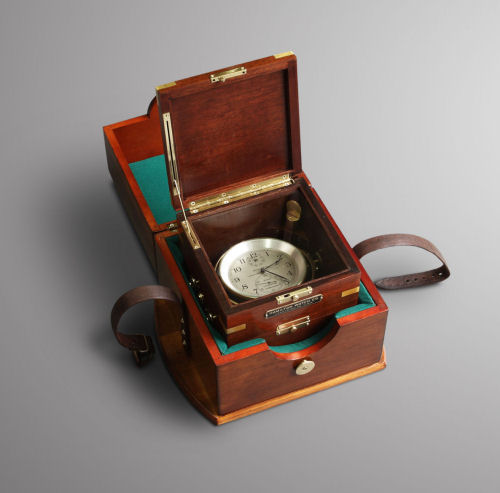
Mahogany Hamilton model 21 two-day marine chronometer, n° 10665, American [...]
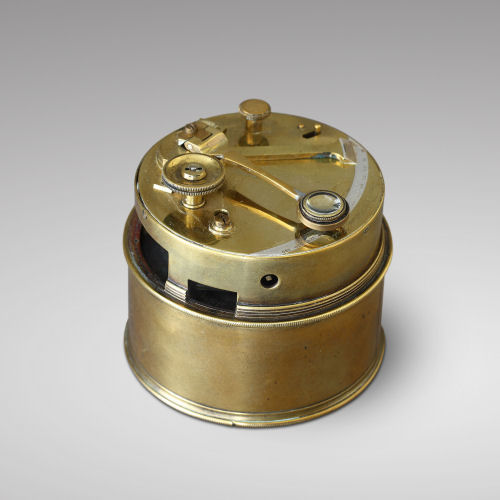
Early pocket sextant, circa 1840, signed W. Harris & Co, Holborn, London [...]
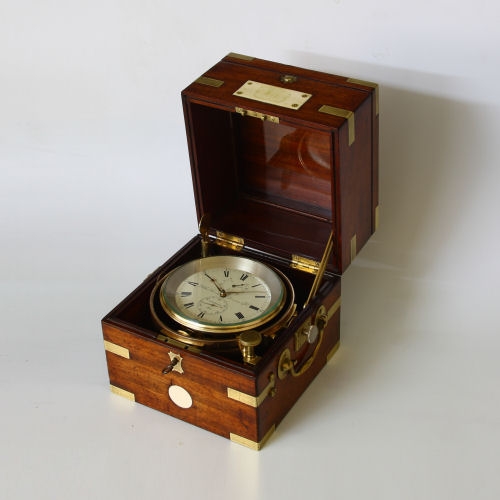
Brass bound mahogany two-day marine chronometer, signed Litherland, Davies & Co, Liverpool [...]
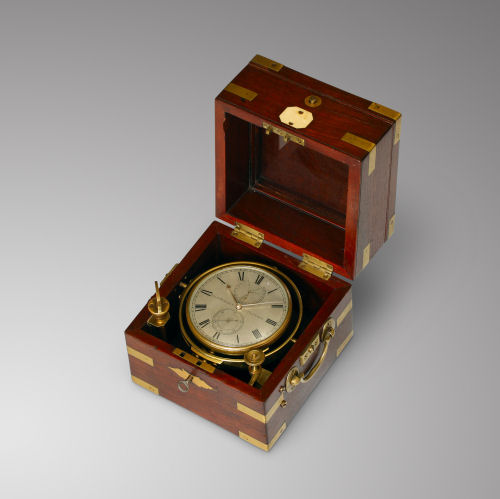
Mid-19th C. small-size two-day marine chronometer, signed Richard Hornby, Liverpool [...]
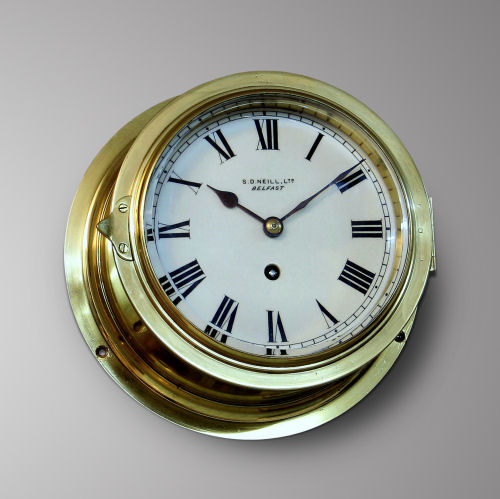
Late Victorian Irish brass ship’s clock, porcelain dial with Roman numerals signed S.D. Neill, Ltd. Belfast, lever [...]
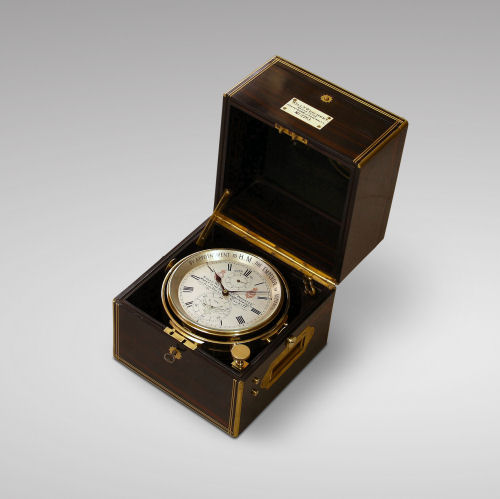
Brass-Bound and mounted coromandel 8-day marine chronometer, WILLIAM WEICHERT CARDIFF, NO. 2261. circa 1875
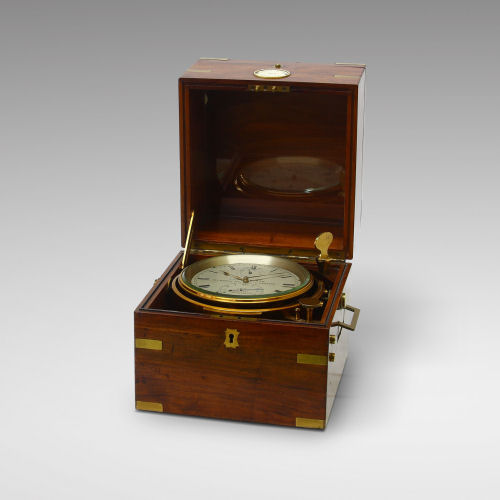
Ship's Chronometer with 8 days power reserve, signed LILLEY & SON, Circa 1900